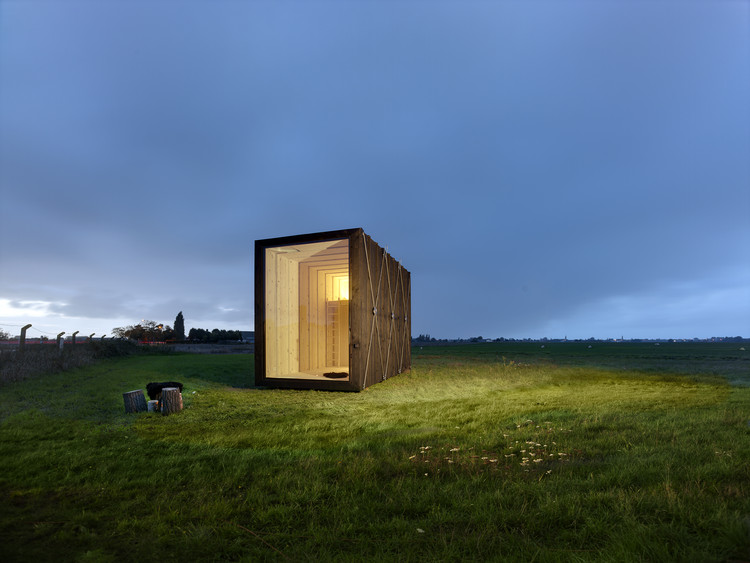
-
Architects: dmvA architects
- Area: 12 m²
- Year: 2019
-
Photographs:Bart Gosselin
-
Lead Architects: David Driesen, Tom Verschueren

Text description provided by the architects. Our previous mobile design Blob VB3 was designed in 2003, a mobile polyester living unit in the shape of an egg that offered a potential sustainable answer to the lack of open space and greenery in Flanders. Flexibility still means sustainability: No fixed constructions, but movable residential objects that can be grouped on the outskirts of cities and villages. However, the reproduction of this prototype proved not to be feasible from a financial point of view. The design of Cabin Y fits within the same vision, but the objectives were adjusted according to the rapidly evolving world of sustainability and circular economy. The design is based on simplicity, budget-friendliness, self-sufficiency and the use of circular materials.

















